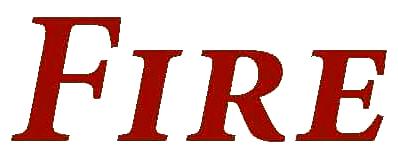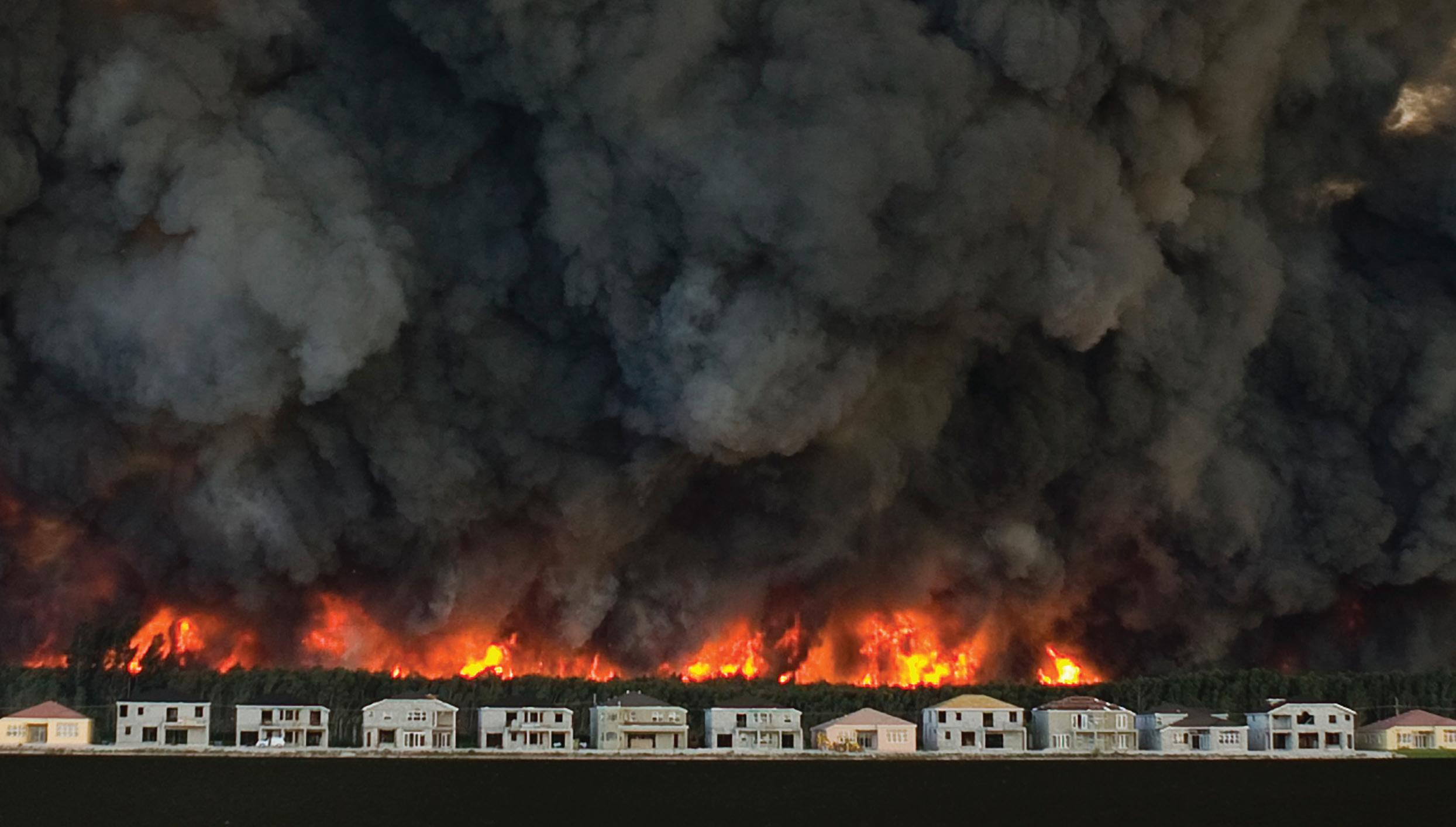
5 minute read
IJWF TOP READS
International Journal of

Advertisement
The sum of small parts: changing landscape fire regimes across multiple small landholdings in north-western Australia with collaborative fire management
Michael Wysong, Sarah Legge, Alex Clark, Stefan Maier, Bardi Jawi Rangers , Nyul Nyul Rangers, Yawuru Country Managers , Stuart Cowell and Grey Mackay Fire is a natural process in tropical savannas, but contemporary cycles of recurrent, extensive, severe fires threaten biodiversity and other values. In northern Australia, prescribed burning to reduce wildfire incidence is incentivised through a regulated emissions abatement program. However, only certain vegetation types are eligible; also, managers of small land parcels are disadvantaged by the program’s transaction costs and interannual variability in management outcomes. Both impediments apply to landholders of the Dampier Peninsula, north-west Australia. Nevertheless, Indigenous rangers, pastoralists and other stakeholders have collaborated for 5 years to manage fire across their small holdings (300–2060km2). We used remote sensing imagery to examine the project’s performance against seven fire regime targets related to biodiversity, cultural and pastoral values. At the scale both of individual landholders and the entire Peninsula (18500km2), the project significantly reduced the extent of annual fire, high-severity fire, mid-late dry season fire, fire frequency and severe fire frequency. The project significantly increased the graininess of burnt and unburnt areas and the extent unburnt for 3+ years more than tripled. The project demonstrates that cross-tenure collaboration can overcome the challenges of managing fire on small land parcels. However, this project’s sustainability depends on securing ongoing funding.
www.publish.csiro.au/WF/WF21118
An evaluation of empirical and statistically based smoke plume injection height parametrisations used within air quality models
Joseph L. Wilkins , George Pouliot , Thomas Pierce, Amber Soja, Hyundeok Choi, Emily Gargulinski , Robert Gilliam, Jeffrey Vukovich and Matthew S. Landis
Air quality models are used to assess the impact of smoke from wildland fires, both prescribed and natural, on ambient air quality and human health. However, the accuracy of these models is limited by uncertainties in the parametrisation of smoke plume injection height (PIH) and its vertical distribution. We compared PIH estimates from the plume rise method (Briggs) in the Community Multiscale Air Quality (CMAQ) modelling system with observations from the 2013 California Rim Fire and 2017 prescribed burns in Kansas. We also examined PIHs estimated using alternative plume rise algorithms, model grid resolutions and temporal burn profiles. For the Rim Fire, the Briggs method performed as well or better than the alternatives evaluated (mean bias of less than±5–20% and root mean square error lower than 1000m compared with the alternatives). PIH estimates for the Kansas prescribed burns improved when the burn window was reduced from the standard default of 12h to 3h. This analysis suggests that meteorological inputs, temporal allocation and heat release are the primary drivers for accurately modelling PIH.
www.publish.csiro.au/WF/WF20140
Crown fuel consumption in Canadian boreal forest fires
William J. de Groot, Chelene C. Hanes and Yonghe Wang Predictive crown fuel consumption models were developed using empirical data from experimental burning projects. Crown fuel load for foliage, bark, branchwood and stemwood were calculated for live overstorey and understorey trees in each plot using nationally derived tree biomass algorithms. Standing dead tree branchwood and stemwood biomass were similarly calculated. Crown bulk density values were calculated for all non-stemwood fuel components. Factors that affect the initiation and spread of crown fires (live crown base height, foliar moisture content, surface fuel consumption, critical surface fire spread rate, critical surface fire intensity) and components of the Canadian Forest Fire Weather Index System were not statistically significant variables. Crown bulk density was moderately correlated with crown fuel consumption but was not an influential factor. A new crown fuel consumption model was developed by regression analysis using fuel load of overstorey tree foliage and standing dead tree branchwood, and fire rate of spread through crown fraction burned. A simpler model was developed using only overstorey tree foliage fuel load and fire rate of spread. Both models provide forest and fire management agencies with enhanced ability to determine crown fuel consumption, fire behaviour and carbon emissions in boreal fires using basic forest inventory or biomass/carbon datasets.
www.publish.csiro.au/WF/WF21049
Understanding fire regimes in Europe
Luiz Felipe Galizia, Thomas Curt , Renaud Barbero and Marcos Rodrigues Wildland fire effects are strongly associated with fire regime characteristics. Here, we developed the first European pyrogeography based on different fire regime components to better understand fire regimes across the continent. We identified four large-scale pyroregions: a non-fire-prone (NFP) pyroregion featuring nominal fire activity across central and northern Europe; a cool-season fire (CSF) pyroregion scattered throughout Europe; a fire-prone (FP) pyroregion extending mostly across southern Europe; and a highly fire-prone (HFP) pyroregion spanning across northern Portugal, Sicily, and western Balkans. Land cover analysis indicates that pyroregions were first shaped by vegetation and then by anthropogenic factors. On interannual timescales the spatial extent of pyroregions was found to vary, with NFP showing more stability. Interannual correlations between climate and burned area, fire frequency, and the length of fire period exhibited distinct patterns, strengthening in fire-prone pyroregions (FP and HFP) and weakening in NFP and CSF. Proportion of cool-season fires and large fires were related to fuel accumulation in fire-prone pyroregions. Overall, our findings indicate that such a pyrogeography should allow a more accurate estimate of the effects of climate on fire regimes while providing an appropriate framework to better understand fire in Europe.
www.publish.csiro.au/WF/WF21081
STOPPING THE DESTRUCTION BY WILDFIRES STARTS NOW.
The relentless tally of losses makes it clear the US is facing a significant wildfire problem. Without a new approach, we are destined for more unmanageable loss of life and property. The time is now to face two harsh realities: • Wildfires are going to happen. • The fire service alone lacks the capacity to contain and extinguish these fires at their current pace.

OUTTHINK WILDFIRE CALLS FOR THE END OF COMMUNITY WILDFIRE DESTRUCTION BY 2050.
This comprehensive strategy lays out five key policy changes that need to be made at all levels of government to dramatically reduce the devastation caused by wildfire. Through collaboration that begins with policy implementation, we can pursue a course of action that will better protect our communities, citizens, and first responders.

